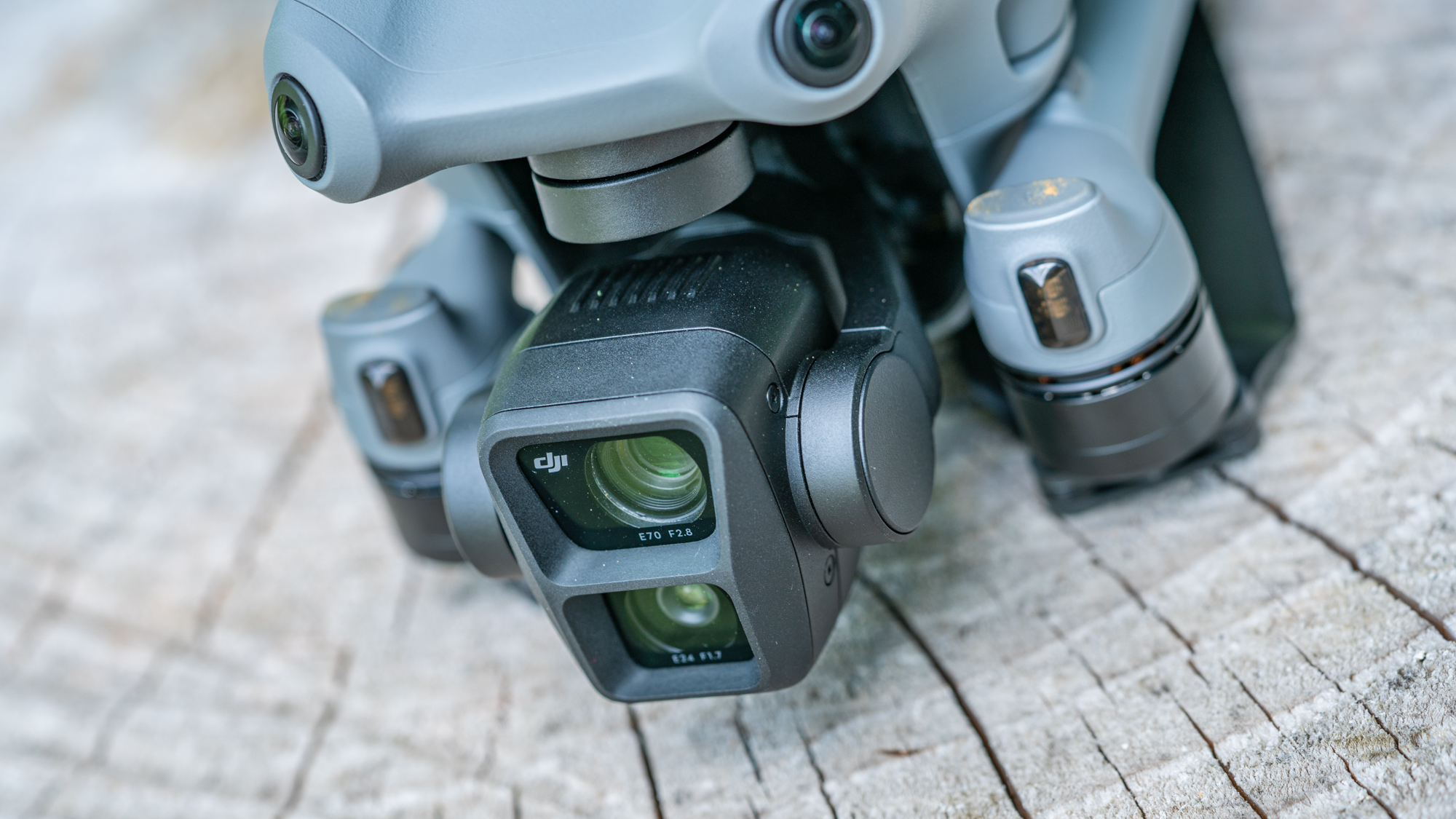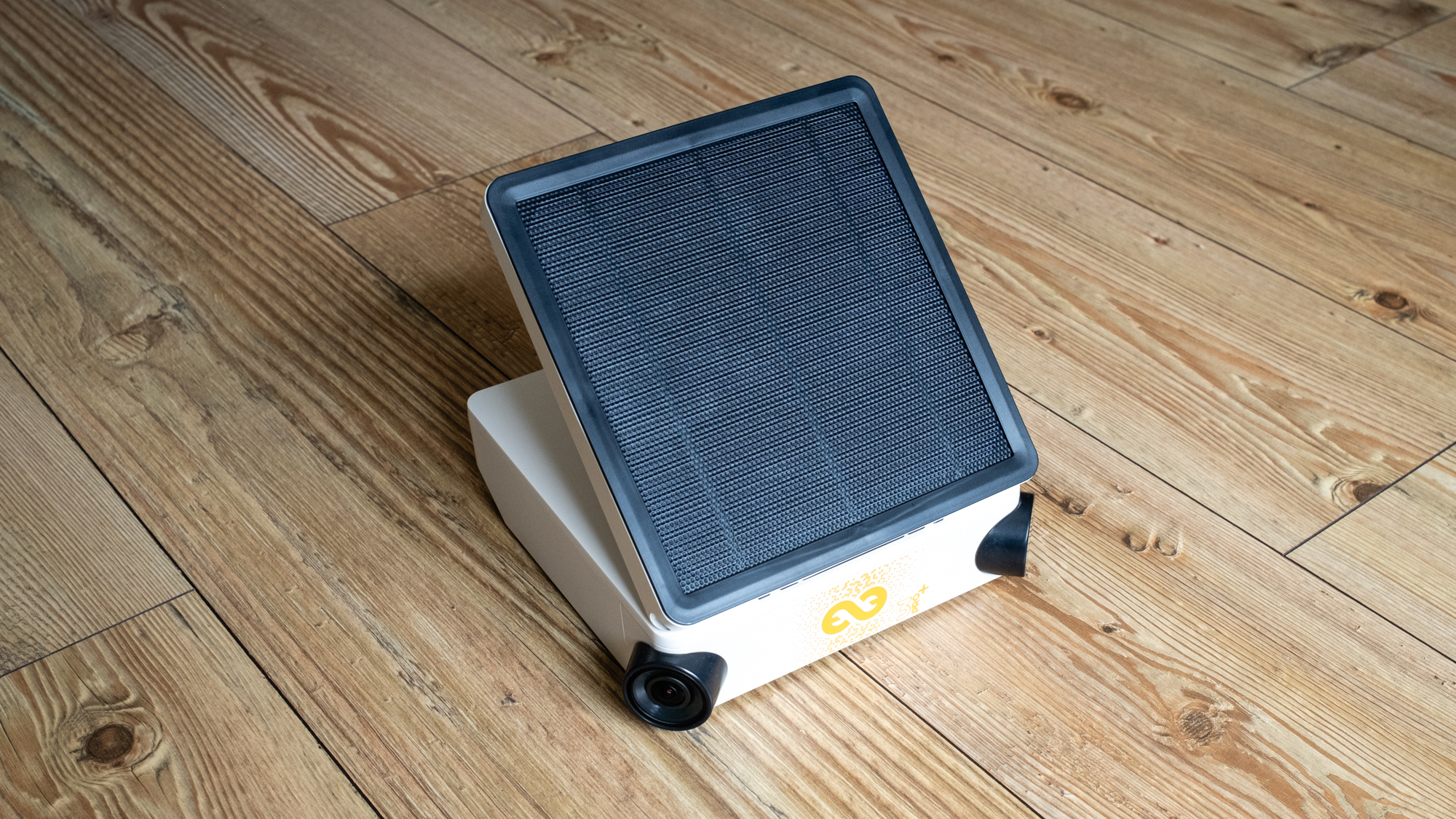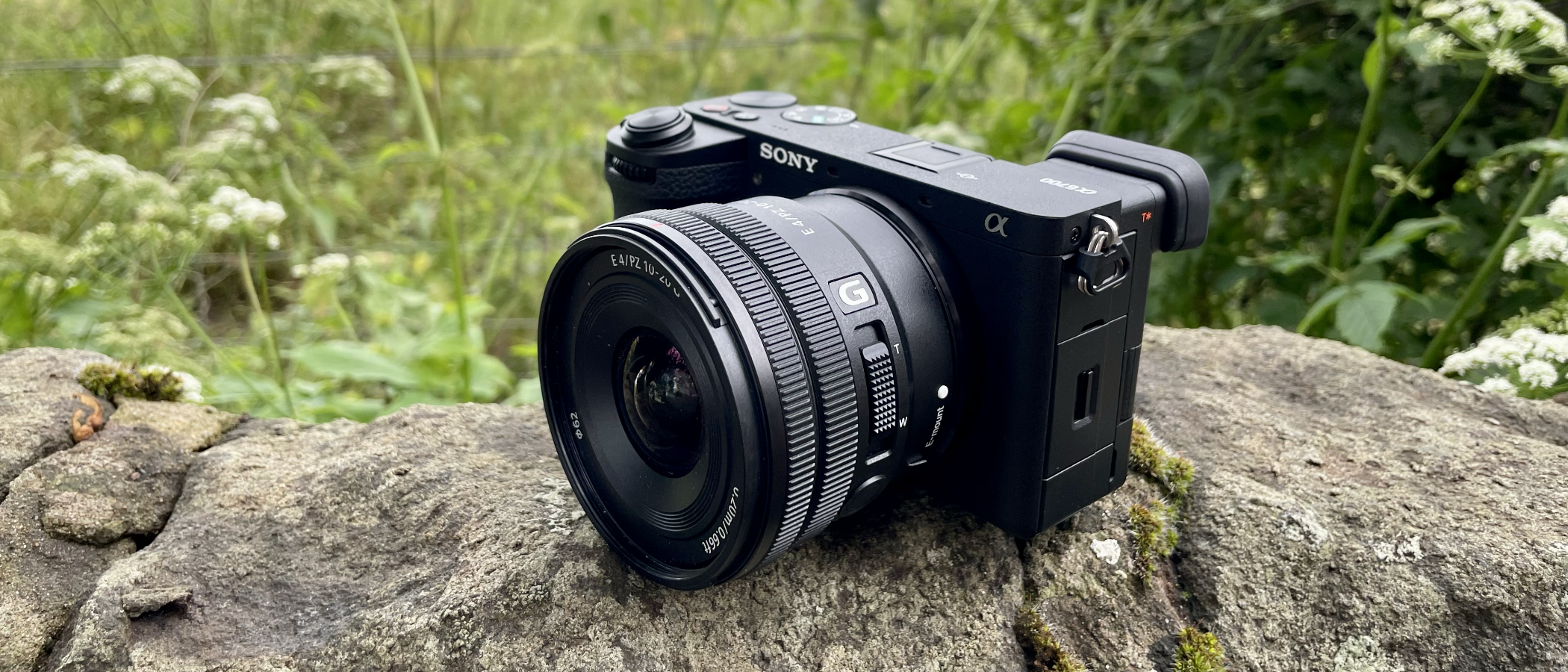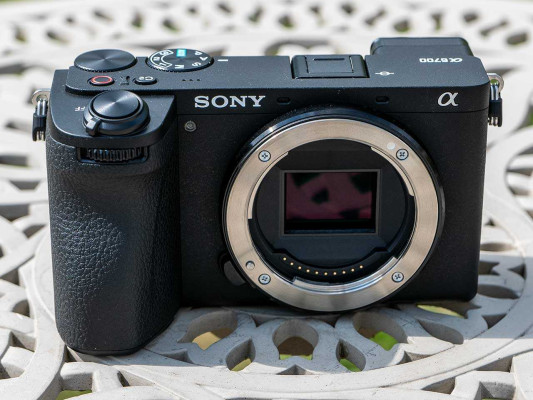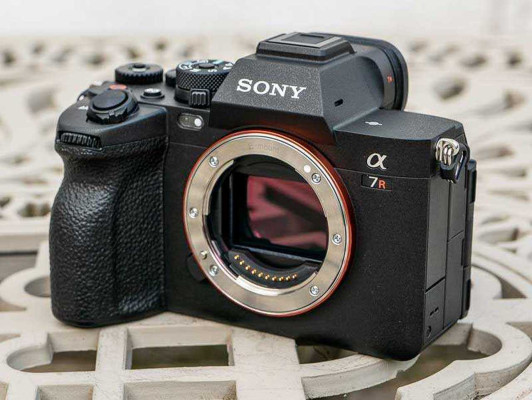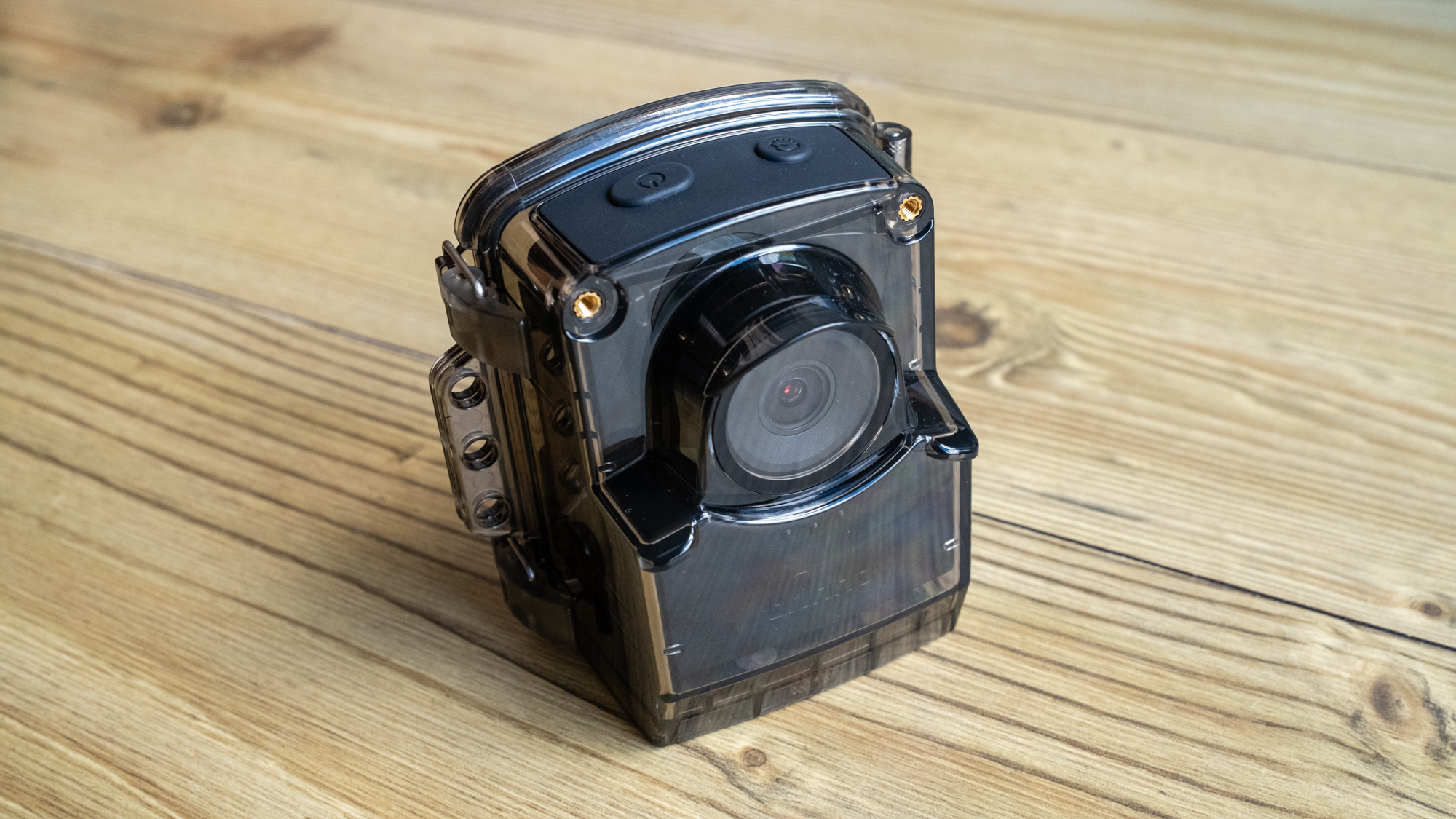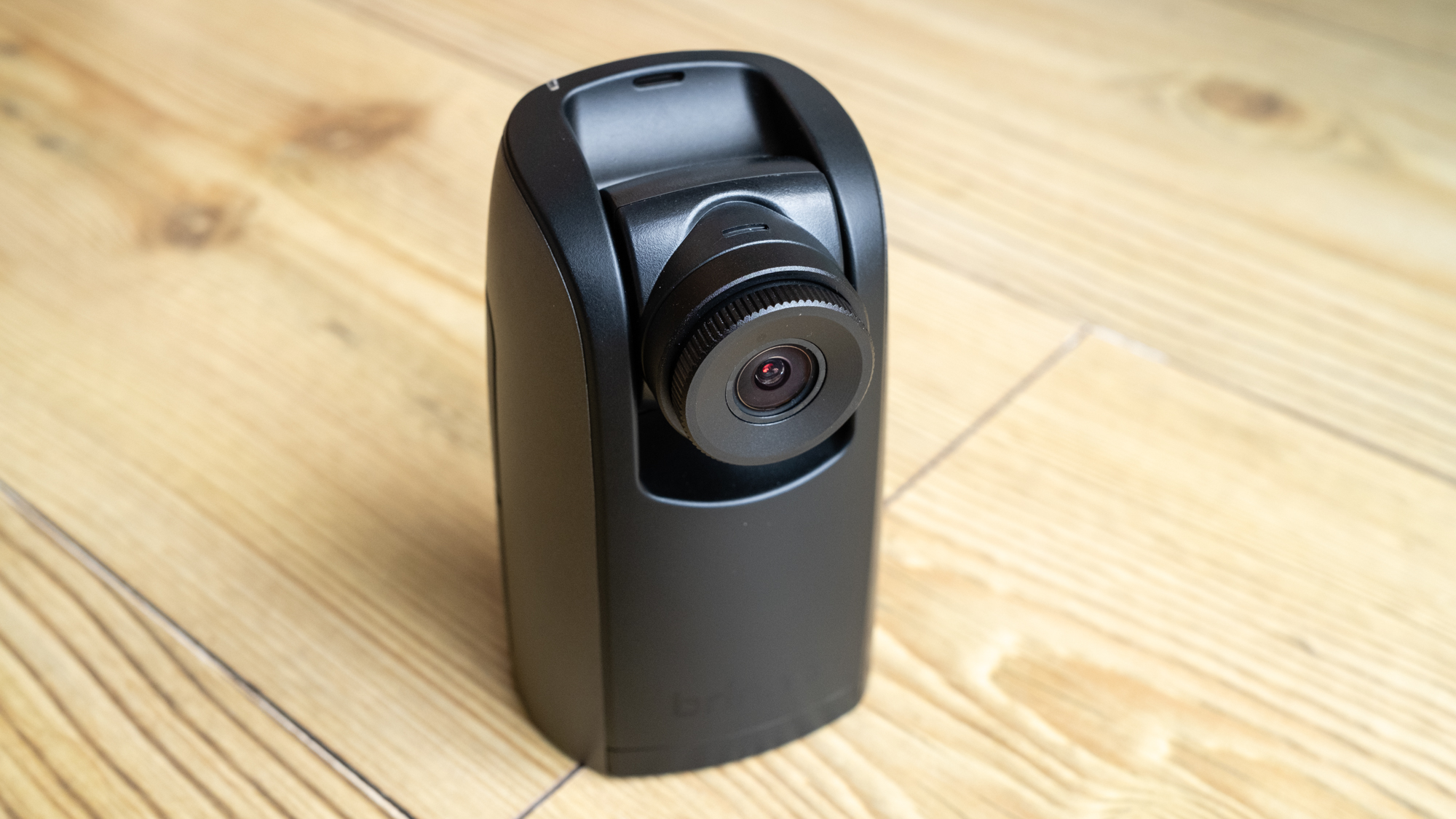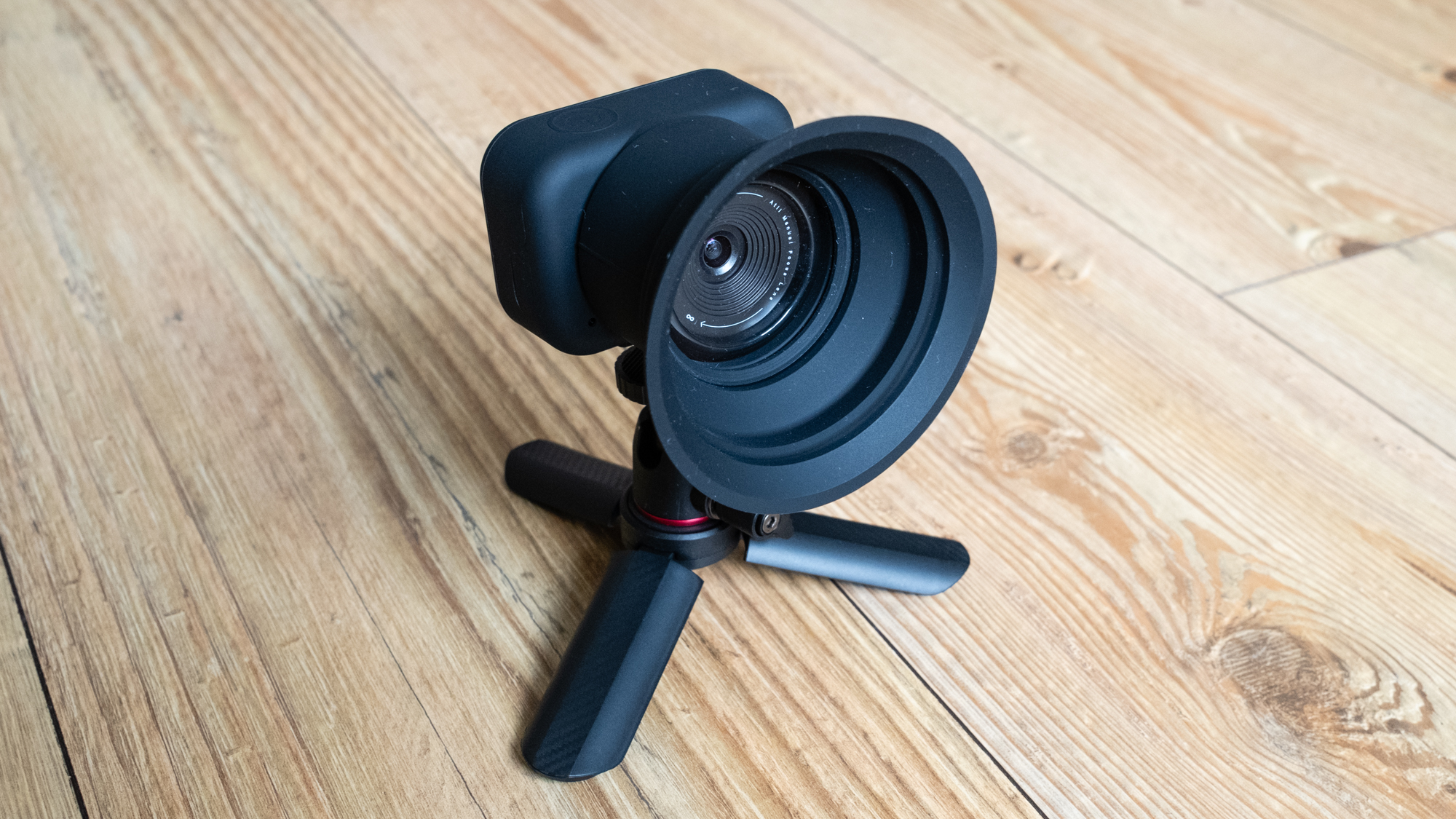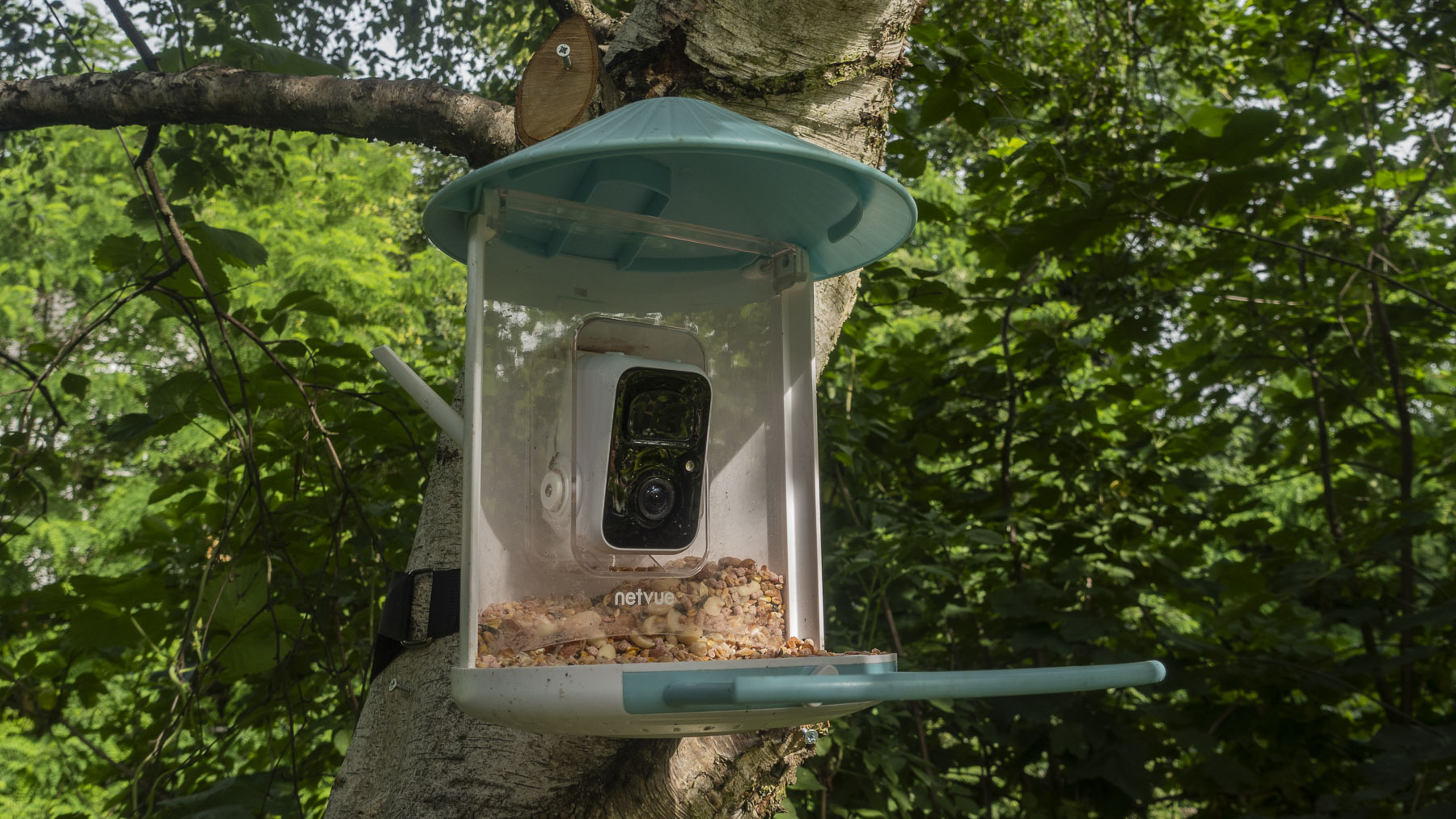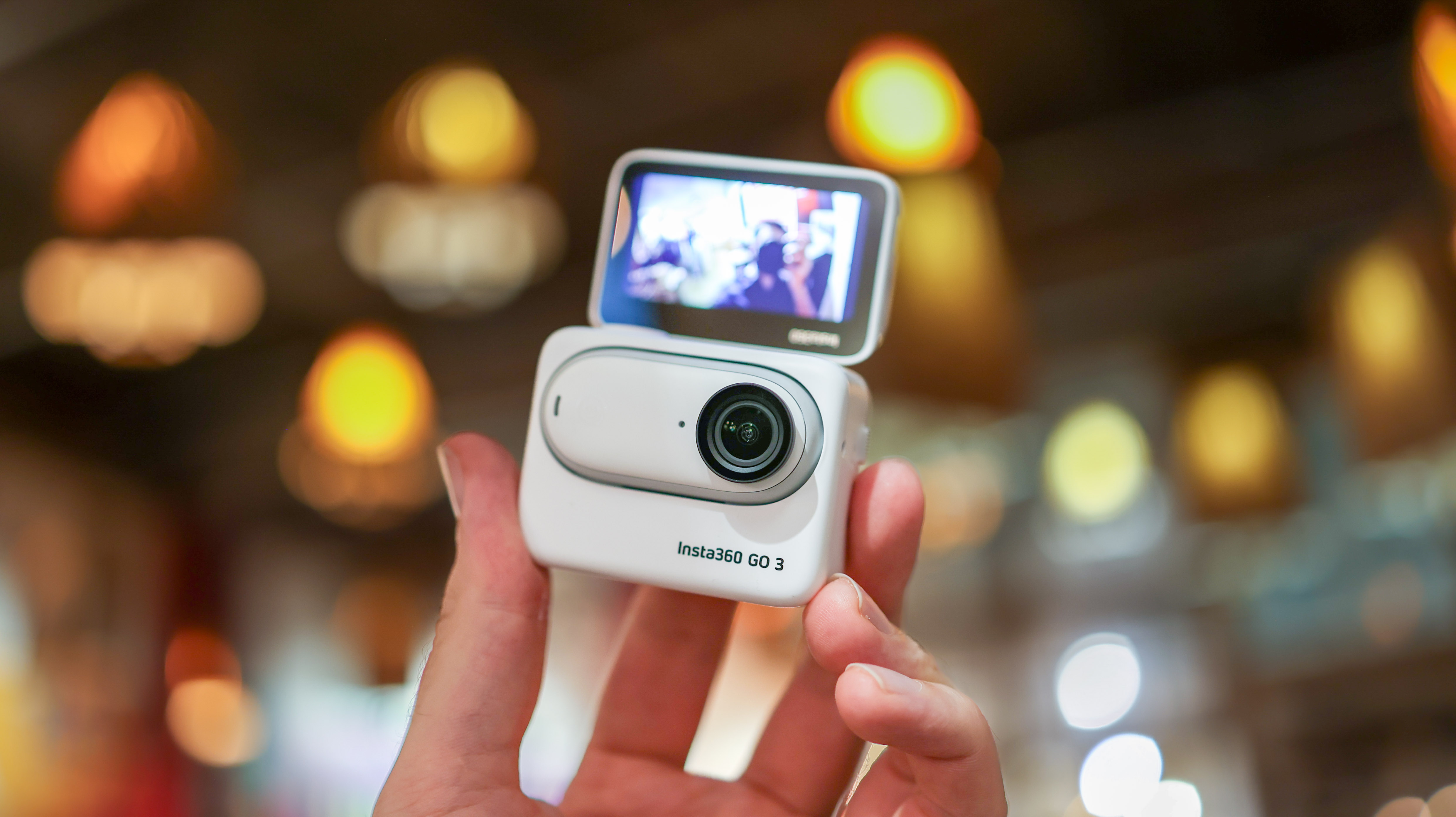Reviews

Sony a6700 review
DPReview Latest |
Product photos by Richard Butler
The Sony a6700 is the latest enthusiast-level APS-C mirrorless camera from Sony. It uses a 26MP BSI CMOS sensor with image stabilization, with a comprehensive set of stills and video features.
Key specifications
- 26MP BSI CMOS APS-C sensor
- Bionz XR processor and dedicated 'AI Processing Engine'
- AF tracking with subject recognition, 759 AF points with 93% coverage
- 11 fps shooting with mech or electronic shutter
- Lossless Raw compression option
- HEIF and HLG Still Image modes
- 4K up to 60p from 6K capture
- 4K/120 from 1.58x crop
- 10-bit video with 4:2:2 or 4:2:0 color
- S-Cinetone, S-Log3 and HLG profiles
- Uploadable LUTs
- USB 3.2 Gen 2 (10Gbps) output
- 2x2 MIMO Wi-Fi
- UVC/UAC streaming up to 4K/30
The Sony a6700 is available now with a list price of $1399, body only, $1499 with the 16-50mm F3.5-5.6 OSS power zoom or $1799 with the 18-135mm F3.5-5.6 OSS.
Index:
- What's new
- How it compares
- Body and controls
- Handling
- Image quality
- Autofocus
- Video
- Sample gallery
- Specifications
- Sony press release
|
What's new
 |
Front dial
For all the technological updates in the camera, perhaps the most significant change in the a6700 is the adoption of a second command dial on the front of the camera. This makes it Sony's first a6x00 series camera to allow control with forefinger and thumb, rather than having only thumb-controlled dials. This brings the camera into line with the Sony a7 series and, for that matter, most other cameras costing more than about $1000.
26MP BSI CMOS sensor
The a6700 uses a BSI CMOS APS-C sensor, which we have to assume is the same one used in Sony's FX30 cinema camera. What will be interesting to see is how the performance of this chip compares with that of the 26MP BSI sensors used in Fujifilm's X-T4 and X-S20, and Ricoh's Pentax K-3 III.
The sensor has AF points scattered across most of its area, giving an AF system that covers 93% of the image area, up from 84% on the previous generation of Sony APS-C cameras.
The new sensor shoots at the same 11fps as the previous generation of cameras, but now has the option to shoot at 11fps with electronic shutter, if you want 1/8000 sec shutter speeds, for instance. We found the rolling shutter to be fairly significant if you shoot Raw (around 64ms / 1/16 sec), but significantly faster in JPEG-only mode at around 25ms (1/40 sec), which is likely to mean a drop to 12-bit readout.
Updated processor
The other most significant hardware change is the use of the latest ('Bionz XR') processor along with a dedicated processor for handling the complex 'AI' algorithms created by machine learning. This processor combination is one we saw in the company's ZV-E1 full-frame vlogging camera, and it represents a big step forward for the APS-C series.
As well as bringing the power to deliver the camera's subject recognition AF modes, it also allows the a6700 to offer the ZV-E1's vlogging functions that can recognize a subject, crop in on it and interpolate the video back up to your chosen output resolution, in real time.
But beyond the performance improvement that comes with greater processing power, the move to a newer generation of processor brings all the other features and advances Sony has made since the a6600. This means a significantly revised and improved menu system, the option to record losslessly compressed Raw files and the ability to capture 10-bit video, which delivers much more flexible Log footage and full HLG HDR video.
As well as HLG HDR video, the a6700 can shoot 10-bit HLG stills in the HEIF format. It can also shoot non-HDR HEIFs in your choice of profile (including HLG, oddly). You'll need to shoot HEIF only (no Raw) and select the HLG Still option if you want your images to be recognized as being HDR, though.
Video
 |
| The a6700 becomes the first in the series to utilize a full-articulated rear LCD panel, supporting its enhanced video capabilities. |
The a6700 is built around what's almost certainly the same 26MP BSI CMOS sensor as the FX30 from the company's Cinema line. And, correspondingly, the a6700's video capabilities are pretty impressive.
The a6700 will shoot up to 4K/60p from its full sensor width or up to 120p from a 1.58x cropped region. Notably, it'll do this while capturing 10-bit precision and up to 4:2:2 color.
As with recent Sony models, you get the choice of XAVC HS (H.265), XAVC-I (All-I H.264) or basic XAVC-S (Long GOP H.264), depending on your needs. The All-I options creep up to 600Mbps (75MB/s), which demand the use of an SD card with the fastest V90 rating, but most modes will happily save to slower cards.
From the recent ZV-E1, the a6700 gets the vlog-friendly modes, with a series of large on-screen buttons, and the 'Auto Framing' modes that punch-in on recognized subject types and follow them around. This is designed for use with a wide-angle composition and the camera mounted on a tripod. The a6700 doesn't have the 'Dynamic Active Steady Shot' mode that can keep you framed in the same composition, using cropped-in image stabilization.
LUTs
The a6700 lets you upload Look Up Tables (LUTs) that map log capture values back to output-ready color and lightness values. These can be used in two ways: they can be directly applied to the footage (essentially making them an uploaded color mode), or used just used to preview the impact they would have if applied, so that the on-screen preview is comprehensible. If used for previewing, the LUTs can be embedded alongside the video file, so that they're available for post-production.
How it compares
The a6700 arrives into an enthusiast-level APS-C market that's going through something of a revival, taking its place alongside recent launches such as Canon's EOS R7 and Fujifilm's X-T5. We haven't included any Micro Four Thirds models here, not because we see them to be a distinct class but because the OM System OM-5 is significantly less expensive (and less capable in video terms), and the faster shooting OM-1 is appreciably more expensive.
| Sony a6700 | Canon EOS R7 | Fujifilm X-S20 | Sony a6600 | |
|---|---|---|---|---|
| MSRP at launch: | $1399 | $1499 | $1299 | $1399 |
| Pixel count | 26MP | 33MP | 26MP | 24MP |
| Sensor size / type | APS-C BSI CMOS | APS-C FSI dual pixel CMOS | APS-C BSI CMOS | APS-C FSI CMOS |
| Maximum burst rate |
11fps mech |
15fps mech 30fps elec |
8fps mech 20fps elec |
11fps mech |
| Image stabilization rating | 5.0EV | Up to 7.0EV | Up to 7.0EV | 5.0EV |
| Viewfinder resolution mag (equiv) |
2.36M dots 0.70x |
2.36M dots 0.72x |
2.36M dots 0.62x |
2.36M dots 0.70x |
| Rear screen | 3.0" 1.04M dots fully articulated | 3.0" 1.62M dots fully articulated | 3.0" 1.84M dots fully articulated | 0.92M dot tilting |
| Video | 4K/60 (o/s) 4K/120 (crop) |
4K/30 (o/s) 4K/60 sub-sampled or 1.81x crop |
6.2K/30 (3:2) |
4K/24 (o/s) 4K/30 (o/s 1.23x crop) |
| 4K/24 rolling shutter (highest quality) |
15.4ms (o/s) | 15ms 30ms (o/s) |
20ms (10-bit) | ∼40ms (o/s) |
| 10-bit video options | S-Log3 HLG |
C-Log 3 HDR PQ |
F-Log F-Log2 HLG |
— |
| Card slots | 1x UHS-II SD | 2x UHS-II SD | 1x UHS-II SD | 1x UHS-I SD |
| Battery life rating (LCD/EVF) | 570 / 550 | 660 / 380 | 750 / - | 820 / 710 |
| Weight | 493g (17.4 oz) | 612g (21.6oz) | 419g (14.8oz) | 503g (17.7oz) |
| Dimensions | 122 x 69 x 64mm | 132 x 90 x 92 mm | 128 x 85 x 65 mm | 120 x 67 x 69mm |
The Sony sits in the middle of this class but looks competitive. The less expensive Fujifilm has a smaller viewfinder, but both it and the Canon promise significantly more effective stabilization. However, it's worth noting that the a6700 is not only alone in offering 4K/120 capabilities (albeit with a significant crop). The Sony also offers 60p footage from 6K capture, which neither rival can match (the Canon sub-samples and the Fujifilm has to crop). Even in the less challenging 24p mode, the Canon's rolling shutter rate is much worse, while the Fujifilm still has to crop in its 10-bit mode.
Body and controls
 |
The a6700 looks a lot like previous a6x00 series cameras, but a little larger. Closer inspection reveals a series of changes, though. There's that front command dial, at last, and a dedicated dial for switching between Stills, Video and Slow & Quick video modes, set just below the exposure mode dial.
In the redesign, the switch that used to change the function of the back-plate button has gone, and the button is now marked as AF-On, and the C3 button at the top left of the control cluster has also been deleted, meaning there's one button and one switch fewer than on the a6600.
The [Rec] and C1 buttons have also been swapped, meaning it's no longer nearly impossible to activate video recording and, somewhat paradoxically, possible to activate it inadvertently.
The body itself is constructed from magnesium alloy, with the usual claims of environmental sealing at all the joins. It has both mic and headphone ports, a micro HDMI socket and a USB Type C port. This port is compatible both with the USB power delivery and USB 3.2 Gen 2 (10Gbps) data transfer standards.
The move to USB-C means the a6700 isn't compatible with any remote controls that used the USB Micro-B/Multi port on previous Sony cameras, and the lack of IR receiver on the hand grip excludes those. Instead Sony's Imaging Edge smartphone app can act as a remote.
 |
The camera is built around a single UHS-II SD card slot. Unlike several other recent Sony cameras, there's no CFexpress Type A socket set inside it. The fastest, V90 UHS-II SD cards are rapid enough to cope with the 600Mbps of the camera's highest data rate video, though.
Viewfinder
 |
The a6700 has a 2.36M dot (1024 x 768px) OLED viewfinder that can run at up to 120fps. There's no apparent change in preview resolution if you use this mode, but battery life will be reduced. The viewfinder optics deliver 1.07x magnification, equivalent to 0.71x in full-frame terms.
The camera also has a fully articulating rear touchscreen. It's a 1.04M dot (720 x 480px) panel. This can be used to set the AF point or specify a subject to track, with the option to use it as a swipeable touchpad when you've got your eye up to the viewfinder. There's then the option to limit the touchpad to certain regions of the screen, to prevent nose-activated-focus if you tend to put your left eye to the finder.
Battery
 |
The a6700 has the same NP-FZ100 battery as the a6600, giving the camera some of the best battery life in its class. The camera is rated as delivering 570 shots per charge if you use the rear LCD or 550 if you use the EVF.
As always, these numbers, based on standard testing defined by CIPA, tend to assume a very battery-intensive way of shooting, so it's not at all uncommon to get nearer twice these numbers if you're less profligate. A rating of over 500 shots per charge means rarely having to worry about the battery: you should get multiple days of fairly extensive shooting out of it. As you'd expect, you can also power or charge the camera over USB, too.
Handling
 |
The addition of the front command dial does wonders for the a6700's usability. For the first time in over a decade, we have an enthusiast-focused APS-C model from Sony that has the level of direct control we've come to expect
The menus are also vastly improved, both in terms of which functions are grouped together and in the greater visual indications about where settings can be found, before you've dug all the way down to find them. As before, with a little setup and customization, you'll rarely need to delve into the menus at all, but with the bonus that they're much less confused and opaque than before, when you do.
It's definitely worth re-configuring the camera when you get it, though. We've long complained that Sony cameras come set to AF-A mode, locking you out of the tracking AF modes that have generally been one of their main selling points. The a6700 addresses this by setting 'AF Tracking + AF On' to its large AF-On button. Which at least means you have immediate access, but also means that there are three different AF modes accessible, by default (the central button of the four-way controlled initiates a single AF acquisition in the center of the frame).
Equally worth modifying, in my opinion, is the decision to make the camera's main two command dials operate aperture and shutter speed, but not have anything to set exposure comp or ISO. My first action will always be to set one dial to exposure comp and then have the other control Shutter Speed or Aperture value, depending on my shooting mode.
Overall, the a6700 can be set up to be the most likeable camera in its series
Between the two command dials and the AF-On button, we generally have enough well-positioned controls for most of the shooting we ever do. And, while we find the C1, C2, C3 and [Rec] buttons a little difficult to reach from the shooting position, they give plenty of options for settings we change semi-frequently. A few tweaks to the Fn menu and the a6700 gives semi-fast access to almost everything we need to change (though you'll need access to three settings: 'File Format,' 'JPEG/HEIF Switch' and 'HLG Still' if you wanted to be able to jump between shooting Raw + JPEG and capturing HDR HLGs, which risks being off-putting).
 |
Overall, though, the a6700 can be set up to be the most likeable camera in its series, having gained a lot of the ergonomic improvements made iteratively across the wider a7 series. Even with the camera's very good AF tracking, which makes selecting an AF target and then recomposing very reliable, we still find ourselves cursing the lack of AF joystick, occasionally.
Image quality
Studio scene
Our test scene is designed to simulate a variety of textures, colors and detail types you'll encounter in the real world. It also has two illumination modes, full even light and low directional light, to see the effect of different lighting conditions.
The 26MP Sony a6700 captures a little more detail than its 24MP siblings, but less than the 32.5MP Canon R7 and 40MP Fujifilm X-T5, which is expected. Still, it has a slight advantage over its popular 26MP rival, the X-T4.
Base ISO noise levels look similar to the a6700's peers. At mid-to-high ISO, the a6700 is showing similar noise levels to the EOS R7 and slightly more than the a6600 and X-T5. Cranking the ISO even higher, that a6700 is similarly noisy to the EOS R7 but more so than the X-T5 and X-T4. Toss the 20MP Nikon Z5 in the mix, and you can see a modest advantage to having a lower-resolution sensor when it comes to super-high ISO noise performance.
 |
|
Out of camera JPEG. |
Looking at the JPEG color, Sony's blues, pinks, and purples are well-saturated and pleasing to the eye, though the bright pink is a touch magenta, compared with its peers. Reds, greens, and yellows look a little less punchy than some of its rivals but some of this is because the Sony's image is a fraction darker than theirs. Overall, though, Sony's color response looks good, and broadly consistent with its rivals.
Base ISO JPEG sharpening is also decent though boarding on aggressive; we actually prefer the a6600's approach. At high ISOs, the a6700 is doing a better job than its predecessor and the Canon at balancing noise reduction with detail retention, but not quite as good as the X-T5. And in areas of low contrast, the X-T5 and surprisingly, the a6600, both perform better.
Dynamic range
ISO Invariance | Exposure latitude
The a6700's faster sensor is slightly noisier than the a6600 was, at ISO 3200, and shows still more noise if you try to lift the lower ISOs. There's still a decent degree of latitude for reducing exposure to protect highlights then lift the shadows, when shooting sunrises or sunsets, and some scope for dropping ISO in low light conditions, to retain highlights, but there appears to be more of a noise cost than on the older camera, presumably because of its faster operating speed.
Video
Video quality
The oversampling means the a6700 is able to offer details levels comparable to the 'HQ' modes of the Fujifilm X-T5 or Canon EOS R7. This puts it ahead of either the X-T5 or EOS R7 in their subsampled modes. Switch to 60p and the Sony is capturing more detail than the Fujifilm, and resolving far more than Canon's comparable mode. The 120p mode is less detailed, but very few cameras even offer this option.
The a6700's rolling shutter figures are a big step forward compared with its predecessors. The full-width 4K footage reads out at a rate of 15.4ms, which is nearly twice as fast as the a6600 could manage. The rate is the same for 24, 30 and 60p capture. We generally consider anything below 20ms to be pretty good and anything below 10ms to be excellent, so 15.4ms is a very good result for oversampled footage. The 4K/120p, with its rather extreme 1.58x crop, measures as 7.7ms.
The a6700 includes an 'Active' stabilization mode that includes digital stabilization. This applies a 1.13x crop to the footage and allows the camera to move the crop around, within the standard video regions, to correct for more dramatic motion than the sensor shift alone can provide. All the camera's gyro data captured during recording is saved into the video file, so that you can apply more powerful digital correction (or less correction, with less crop, in some circumstances), in Sony's 'Catalyst' post-production software.
4K/120p appears to be taken from a roughly 3.9K region of the sensor, so there's no leeway to crop in any further to give digital stabilization, even if the processor proved able to keep up.
As with its peers, the a6700 can overheat, especially if you use its higher resolution and frame rate modes for longer periods. You can make the overheat protections less stringent if you choose. We didn't encounter this, as we were generally shooting short clips in moderate temperatures, but don't expect to be able to capture very long clips (especially in 4K/60).
Video Auto Framing
The a6700's Auto Framing feature, first introduced on the ZV-E1, makes it easier than ever to create professional-looking camera work. Perfect for vloggers or really any one-person production team, it can be used to mimic the way a camera operator might punch in on a subject and follow them as they move in the frame. This is all done automatically, of course, using AI power. And it's a great way to add some spice to otherwise dull, static shots.
To try it, first, mount the camera on a tripod and affix a wide-angle lens. The latter is necessary so that the a6700 has ample frame to digitally 'punch in' and follow a subject.
Users can choose between three different 'crop levels' including large (the tightest crop), medium or small. For the most dramatic effect, stick with large or medium. You can also set how quickly the camera adjusts the framing, from one (the slowest) to five. We found the default setting, three, works well for a casually moving subject.
With both those options set, the last thing to do is to decide when the Auto Framing feature kicks in. By default, it starts automatically when you press record, but you can instead have the camera wait until a subject – again, they have to be human – is detected and tracking begins. You also have the option to delay the feature switching on until either 15 sec or 30 sec of record time has elapsed.
So what does Auto Framing look like from the user's perspective? If you're looking at the rear display, you'll see Eye Detect engage as soon as a subject appears. Then, a large, white rectangle will appear around that subject, indicating Auto Framing has begun. As footage rolls, you'll notice the rectangle slowly zooms in and out and moves subtly around the subject, keeping them in the frame at all times, whether they move or not.
And if there are two or more subjects in the frame, a simple tap of the touchscreen tells the a6700 who to prioritize. This can be adjusted while recording.
The camera will deliver either 1080 or 4K footage (though the tightest crop appears to be derived from a ∼2.6K region), with the choice of whether to output the cropped or uncropped version to the memory card and the other over HDMI. What you can't do it output the uncropped version in 4K and the cropped detail in 1080: the camera delivers both streams at the same resolution.
Video AF & touch interface
Autofocus performance during video capture is top-notch. In addition to face and eye detection, all of the subject-specific AF detection/tracking modes are available. Not only that, they work extremely well. And like all recent Sony ILCs, users can adjust set both the AF transition speed and how responsively the AF system shifts from one subject to another.
The touch interface on the a6700 is also responsive and well-designed for video. When touch is enabled, core functions and exposure parameters are available around the outside of the frame and can be selected and tweaked with a tap of the finger. This is especially handy if you need to change a setting while footage is rolling without introducing camera shake by pressing a button or turning a dial.
The touchscreen can additionally be used during video to select a subject to track with AF or to tell the camera to prioritize one subject over another.
Autofocus
 |
| Vehicle detection mode seemed to recognize this tram in New Orleans Sony E 16-55mm F2.8 G | ISO 100 | 1/400 | F5.6 Photo: Richard Butler |
The a6700's autofocus system is a continuation of the one used in Sony's cameras for many years: you can choose from seven sizes of AF area, from 'Wide,' which covers almost the whole frame, down to single AF spots. In AF-C mode you gain access to 'tracking' variants of each of these AF areas, letting you decide how you want specify a subject to track.
On top of this are the camera's subject recognition options, with the options being: Human, Animal/Bird, Animal, Bird, Insect, Car/Train, Airplane. These don't completely override the AF area you select though: the camera will try to focus on the subject closest to your chosen AF point, if there's more than one subject, and will ignore a recognized subject if it's too far away from your chosen point. This means you don't constantly have to turn subject detection off if you want to focus on something other than a recognized subject in the scene (though you will have to if you want to focus on something close to a recognized subject).
Autofocus testing
 |
|||||||||||||||
|
1 |
2 |
3 |
4 |
5 |
6 |
7 |
8 |
9 |
10 |
11 |
12 |
13 |
14 |
15 |
16 |
At the maximum burst rate of 11 fps, the Sony a6700 is able to maintain focus on an approaching subject, using a single AF point, with a near-perfect hit rate. Note: this test was performed using the mechanical shutter.
Most cameras we assess pass the above test with ease. But many still struggle with our bike weaving test (below), which requires the camera to both recognize and track a subject as they move unpredictably in the frame, in addition to judging distance and managing to drive accurate focus.
 |
|||||||||||||||
|
1 |
2 |
3 |
4 |
5 |
6 |
7 |
8 |
9 |
10 |
11 |
12 |
13 |
14 |
15 |
16 |
Given the fact Sony has long been a leader in subject tracking reliability, it should come as no surprise the a6700 also passes this test with flying colors. The tracking box sticks to Richard like glue and the vast majority of frames are crisply focused.
These results outshine the a6700's competition, namely the Canon R7 and all Fujifilm bodies. That said, the Canon is able to churn out 15 fps compared to 11 fps on the Sony, which is worth taking into consideration if you need the speed.
Detecting faces, eyes & other subjects
Sony's face and eye detection remain best-in-class. While the camera's suite of subject-specific detection/tracking modes – including human, animal/bird, animal, bird, insect, car/train and airplane – also work remarkably well. Animal detection, in particular, blows the competition away.
Switching between the seven subject options requires some practice, not to mention memorization of the order in which each appears (I suppose listing them alphabetically would've been too easy). For best results, we recommend customizing a button, like C2, to quickly cycle through each.
One important note. If you're attempting to track a subject that doesn't quite fit any of the above categories, like a sailboat or approaching motorcycle, your best bet is to switch to standard AF tracking. Modes like car/train detect will be of no use (the mode does work for buses and 18-wheelers though).
 |
| Love your pet? Sony's animal detect is best-in-class. Sony E 15mm f/1.4 G | ISO 2500 | 1/125 sec | f/3.5 Photo: Dan Bracaglia |
Finishing thoughts on AF
We're impressed with the a6700's autofocus capabilities. No camera company is leaning into AI subject recognition quite as successfully as Sony. And while there are faster-shooting cameras out there, like the EOS R7, we feel 11 fps (with near-perfect AF) should be fast enough for most users.
One disadvantage of the a6700 is you don't get an AF joystick. However, you can use the touchscreen as an 'AF touchpad.' When engaged with an eye to the finder, users can drag their finger on the screen to set the AF point/area or select a subject to track. This method definitely doesn't work as reliably as a dedicated joystick but it's a decent workaround. Alternatively, you can often simply trust the tracking, point the camera at your subject, hold the shutter half-pressed and recompose. This works well enough, most of the time, but a joystick would still have been convenient.
Conclusion
By Dan Bracaglia
| What we like | What we don't |
|---|---|
|
|
The Sony a6700 is one of the best enthusiast mirrorless cameras for the money in 2023. The seventh iteration in a series that spans back almost a decade, every single a6000 model we've ever tested has received either a gold or silver award. And the a6700 is no exception. It excels in every regard whether you're focused on stills, traditional video, vlogging, or all three.
The first of its siblings to sport a front control dial (in addition to a rear), this is by far Sony's most user-friendly APS-C camera to date (though this reviewer is still nostalgic for the NEX-7). It also benefits from the brand's latest menu system borrowed from the full-frame a7 series, with color-coded categories that are much easier to navigate than the old menus.
 |
| Sony E 16-55mm F2.8 G | ISO 800 | 1/3200sec | F2.8 Processed with Adobe Camera Raw, Camera Std color mode, exposure and shadows reduced. Photo: Richard Butler |
The body is a good bit chunkier than its siblings. But the grip has a solid indentation making it easy to clutch with one hand. And the combo of a rear and front dial also makes it well-suited for single-handed use. Vloggers will also appreciate the fully articulating touchscreen as well as the useful Auto Framing feature. And there's no lack of customization options.
Image quality is very good, as you'd expect of a modern camera. Raw files offer plenty of flexibility while standard JPEG output is competitive with the best. The video output also looks great. 4K footage, in particular, gives the competition a run for the money, namely the Fujifilm X-T5 and Canon EOS R7. And you're unlikely to encounter the distracting effects of rolling shutter thanks to the camera's fast readout speed.
Autofocus performance is also best-in-class whether in video or stills mode. The system is particularly well-tuned to tracking human eyes. But it also does a remarkably good job at tracking pets and other animals, as well as certain vehicles, including planes and trains.
All of this adds up to a gold award for the a6700, which is both the biggest leap forward in its series to date, but also, perhaps, the best APS-C camera, for the most people, in 2023.
Scoring
Scoring is relative only to the other cameras in the same category. Click here to learn about what these numbers mean.
Sony a6700 Category: Mid Range Interchangeable Lens Camera / DSLR |
Build quality Ergonomics & handling Features Metering & focus accuracy Image quality (raw) Image quality (jpeg) Low light / high ISO performance Viewfinder / screen rating Optics Performance Movie / video mode Connectivity Value | PoorExcellent | ||||
Conclusion The Sony a6700 is a well-rounded, camera that's as well-suited for portraiture and landscape photography as it is for travel vlogging and filmmaking. Image quality, video capability, and autofocus are all top-notch, better than or on par with the best. The ergonomics and menus are well thought-out and there's no shortage of lenses to choose from. Whether starting out, moving to mirrorless, or upgrading, the a6700 is a solid choice. | |||||
| |||||
| |||||
Compared to its peers
 |
| Sony's subject-specific AF tracking modes work remarkably well. Out of camera JPEG. Sony E 70-350mm F4.5-6.3 G | ISO 125 | 1/800 sec | F6.3 | 288mm Photo: Dan Bracaglia |
The Fujifilm X-T5 is pricier than the Sony a6700 and styled quite differently. While the Sony is fairly utilitarian in its flair, the Fujifilm oozes retro charm. Both cameras have huge libraries of compatible lenses to choose from. However, you'll find a wider range of primes with the Fujifilm. We prefer Fujifilm's JPEG output—Raw capture is comparable—but appreciate Sony's video output more. You do get faster shooting speeds with the X-T5 and a better EVF, but the Sony is noticeably more reliable in the AF department.
The Canon EOS R7 is another well-rounded APS-C body capable of great stills and video, just like the a6700. It captures higher-resolution photos at a faster burst rate than the Sony, but again, autofocus performance can't touch that of the a6700. The Canon also suffers from a serious lack of dedicated glass.
Compared to its predecessor, the Sony a6600, you're getting a much more ergonomically-friendly camera with fantastic video, that isn't susceptible to rolling shutter. That alone makes it worth any extra dough.
Finally, for those considering the entry-level full-frame Sony a7C against the a6700, ask yourself the following: Do you care about video, and/or do you want a camera that's pleasant to operate? If the answer is yes to either, get the a6700. Sure, the a7c has a larger sensor but lenses are also pricier, it lacks a front control dial, has lousy menus, and a less impressive EVF. It also commits you to generally larger and more expensive lenses.
Sample gallery
Please do not reproduce any of these images on a website or any newsletter/magazine without prior permission (see our copyright page). We make the originals available for private users to download to their own machines for personal examination or printing (in conjunction with this review); we do so in good faith, so please don't abuse it.












